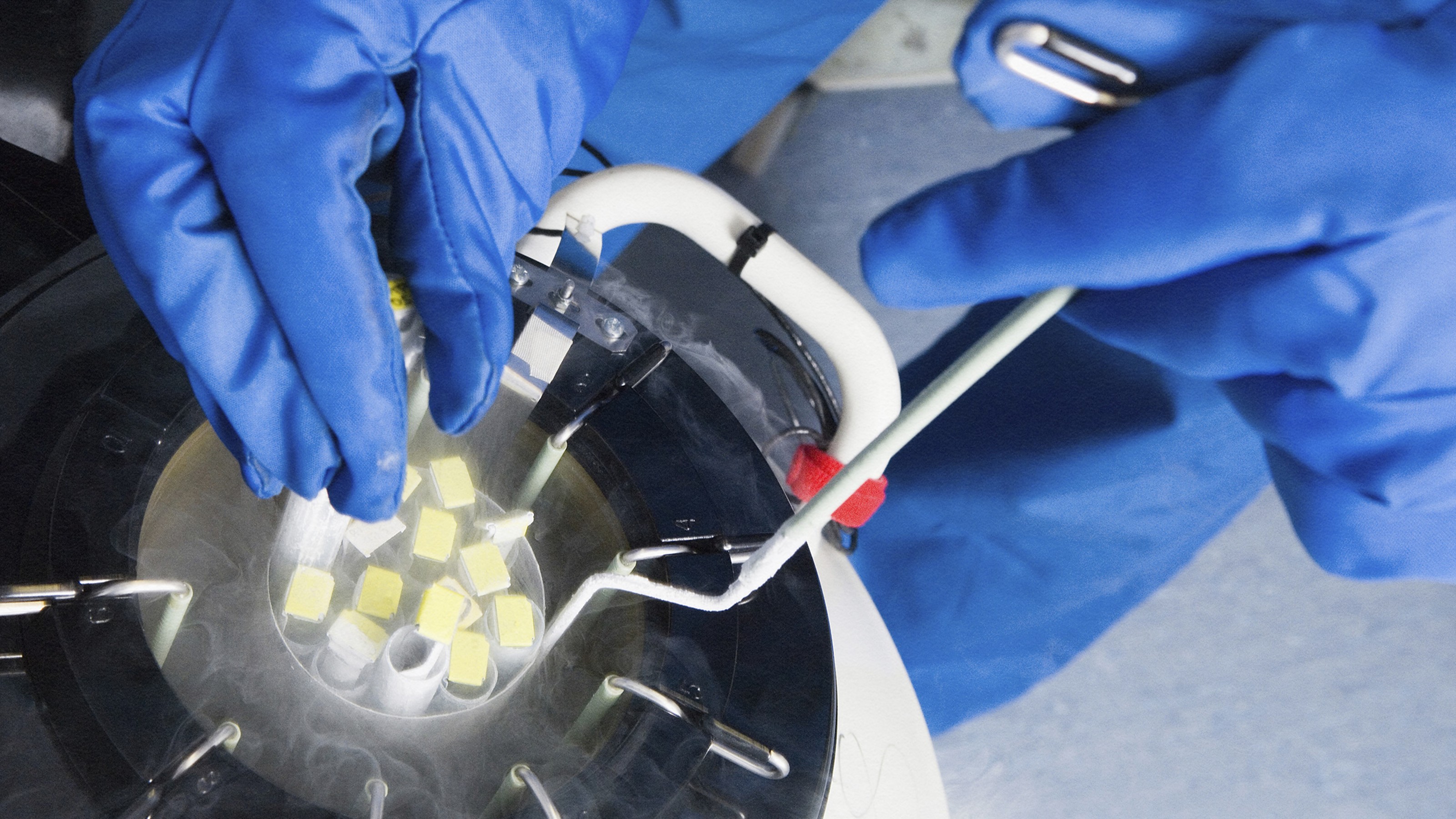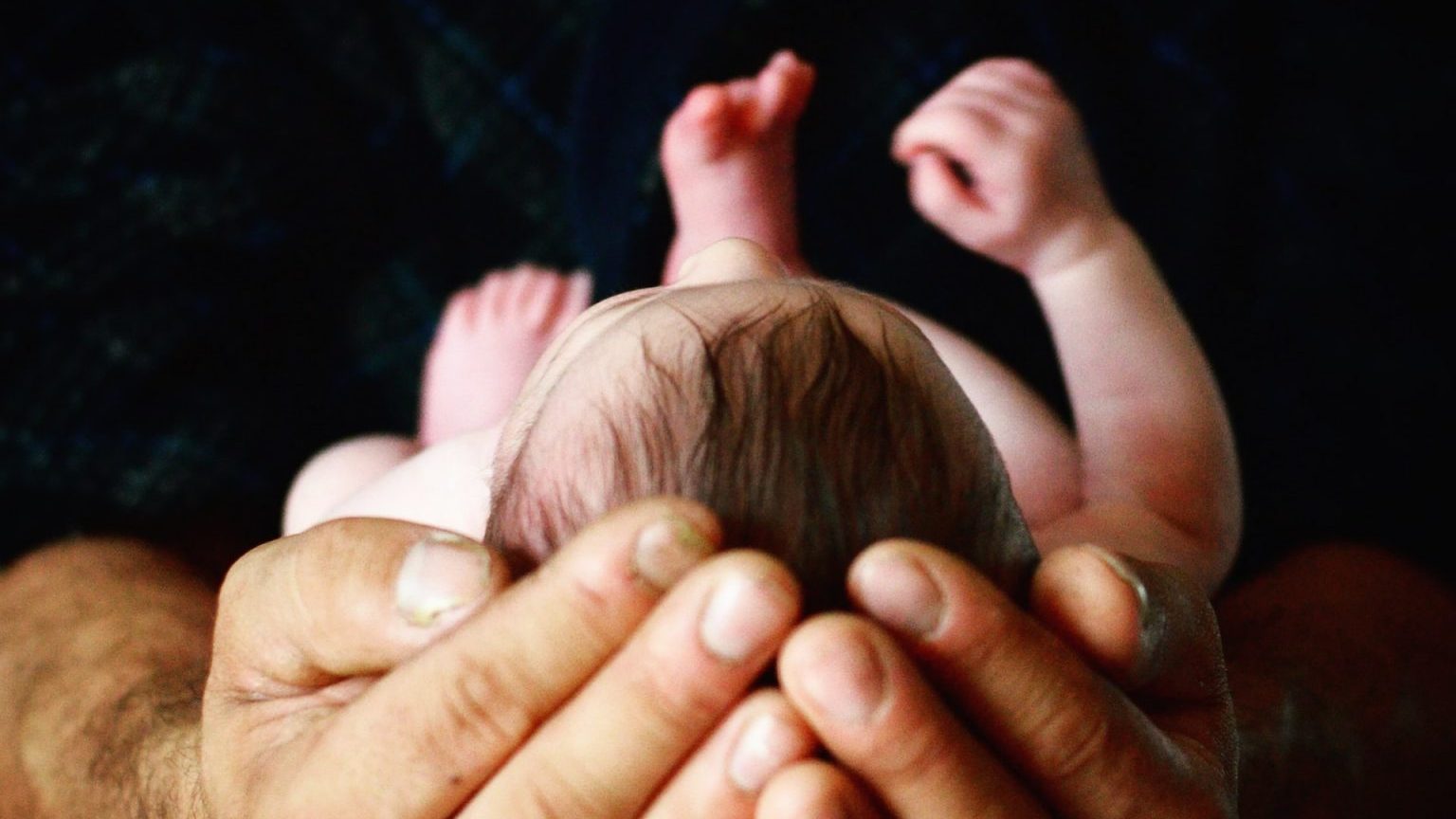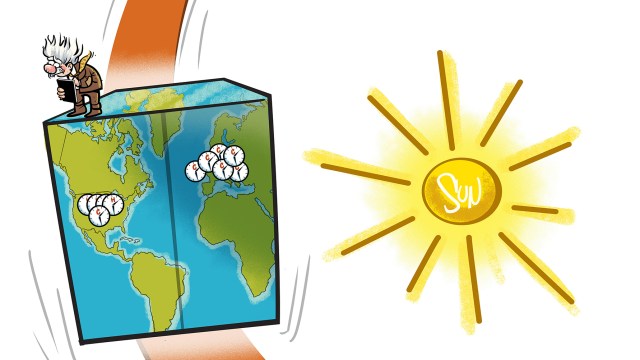Meet the parents. All 3 of them.

Progeny is a useful word, reminding us that babies come from their parents’ genes.
When it comes to humans, we take it for granted that a baby has the genes from her two parents, their DNAs spiraled together into a long information code known as the genotype: it stores the information of what the baby will look like, how tall, her potential for certain diseases, some personality traits, etc.
In essence, the mixing of DNA from the parents is the recipe for a new being, at the same time unique and predictable: unique in her makeup due to the uncertain details of the bonding of the parents’ DNA, but predictable because the genetic building blocks come from two (potentially) well-known sources.
This well-known state of affairs has recently changed. In a new technological development that mixes the incredible with the fantastic, it is now possible to create babies from the genetic materials of three adults.
The technology was developed to allow mothers with devastating genetic mutations to have healthy babies.
In April 2016, a couple from Jordan hired an American medical team from New York’s New Hope Fertility Center to experiment with a new reproductive technology. The team had to attempt the procedure in Mexico, as it is forbidden in most countries. (John Zhang, who led the American team, said they chose Mexico because “there are no rules.” The only country where the procedure is currently allowed is the UK.)
The “real” mother suffers from Leigh syndrome, a genetic disease that attacks the nervous system and had killed her first two children. The genes responsible for the disease are located in the mitochondrial DNA, being thus naturally separated from the majority of the genetic information stored in the cell’s nucleus. You can think of the mitochondrion as a sort of separate piece of equipment within the cell, a tiny engine where biochemical processes responsible for respiration and energy production occur. With only 37 genes, the genetic information stored in the mitochondrion is passed from generation to generation by the mother.
Dr. John Zhang with the Jordanian couple’s baby. (New Hope Fertility Clini)
The new technique takes advantage of the mitochondrion’s genetic isolation. If this is where the problem is, why not use someone else’s egg and inject the real mother’s healthy genetic material in it? Technicians fertilize both the mother’s and the donor’s eggs with the father’s sperms. Before the fertilized eggs start to divide to form an embryo, their nuclei—containing most of the genetic material—are removed. The real mother’s nucleus is then injected into the donor mother’s egg. Now, the donor’s egg, with the healthy mitochondrial DNA, also has the mother’s DNA.
In the case of the Jordanian couple, the technique used was slightly different. As Muslims, the couple opposed the destruction of the embryos. Only the donor’s egg was fertilized, after it already contained the mother’s DNA. In the end, the result is the same: a fertilized egg with the genetic material from three people.
Ethical issues
The couple ended up having a baby boy, and that was by design. They chose a male embryo, because adult males don’t transmit mitochondrial genes, only females—but there are no safeguards that this will always be the case.
Also, accidents can happen. In the case of the Jordanian couple, tests show that a small amount of defective DNA from the mother was accidentally injected into the donor’s egg. In small amounts, this shouldn’t present a problem, but it’s still unclear what the safe amounts are. The couple has refused to subject their baby to further tests, invalidating their experience as a true long-term scientific study.
The technique, amazing as it is, raises important ethical questions. For the first time in history, a human baby carries genetic information from three people. We don’t yet know the ramifications of such science; it’s not clear that the babies won’t have long-term genetic problems. There have been no controlled studies.
The technique was repeated in a clinic in Kiev, where a couple now has an apparently healthy 15-month-old boy. Valery Zukin, the doctor who runs the Kiev clinic, told NPR he sees no problem with the procedure. “If you can help these families to achieve their own babies, why it must be forbidden? It is a dream to want to have a genetic connection with a baby.”
So far, four babies from three parents were born at the same clinic in Ukraine, and three more women are pregnant, including one from Sweden. One of the babies was a girl who could end up passing the mitochondrial DNA to her own kids. (It is not known whether the girl’s parents chose to have a female baby, or whether that was an accident.)
Still, many doctors and ethicists question the procedure, saying it’s too soon for any clear-cut verdicts—whether from a scientific or ethical perspective.
“We just don’t know if it’s safe,” says Jeffrey Kahn, director of the Johns Hopkins Berman Institute of Bioethics, who chaired a U.S. Academy of Sciences panel that examined the medical and ethical issues of the procedure. “This is an uncontrolled experiment in which women are being offered a new technology that’s never been tried before. That’s why it’s a concern.”
Marcy Darnovsky, who heads the Center for Genetics and Society, a U.S.-based watchdog group, is even more direct:
“This is pretty troubling,” she tells NPR. “This is really an irresponsible kind of human experimentation. We just don’t know what’s going to happen to these children.”
Some scientists worry that this is an important step toward a more complex direction, where it may be possible to create “designer babies,” with the parents essentially choosing a set of desired genetic characteristics they want their children to have, from hair and eye color to, potentially, physical strength, athleticism, and IQ. Although current technologies are far from this, if genes from three or more people can be safely combined into a single baby, there is nothing to stop a more ambitious undertaking where genes from a larger sample of donors are swapped on demand. Could we then create “super humans”? We can envision all sort of reasons to do so, most of them wrong: from super-soldiers to super-athletes, to the effective isolation of society into separate sects defined by genetic prowess.
This goes a long way from a few decades ago, when parents didn’t even know their baby’s gender before birth.
Not that the new moms are worrying too much about these issues. To them, among dirty diapers, a lot of crying, and smiling, every day is a joyous celebration. “In the end, we are all children of Adam and Eve,” said one of the Ukrainian moms. “So, we are all connected.”
Adam and Eve or not, it is true that all living creatures are deeply connected to the history of life on Earth. We all share a last universal common ancestor (LUCA), a single-celled microorganism that lived some three billion years ago.
The novelty now is that one of these species is developing technologies capable to take their genetic future into their own hands, redefining evolution by natural selection. We are entering the age of evolution by artificial selection.
Where this is going to end, no one really knows.
The post Meet the Parents. All 3 of Them. appeared first on ORBITER.





